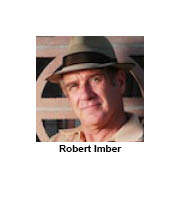
For tens of thousands of attendees, mod music mavens and “Mad Men” retro-revelers, a well earned rest and a “I survived Moderism Week” T-shirt are in order.
If you missed it, next year is already being planned. For the uninitiated, see modernismweek.com and Palm Springs Life’s February 2013 issue on Modernism.
The yearly conclave is the biggest (and best) international celebration of everything mid-century modern…that is, the architecture and design, fashions, furniture, furnishings, classic cars, groovy music, Airstream trailers, graphics and art, and high-style fun that flourished in the Post-WWII era.
The desert was abuzz with double-decker buses, home tours, lectures, films, swanky soirees, celebrity sightings, gala balls and a February full of “modernistas” from near and afar savoring the fabulosity of modernism (Fabulosity: high velocity of everything fabulous!).
Modernism Week 2013 is over…or is it? Desert wide, architectural sites signify modernist contributions as reminders to the significance of that 1940s to 1970s epoch. Modernism Week honors them so we can enjoy them in our daily routine.
Palm Desert’s Sandpiper Condominiums are an exceptional example of residential and landscape design by William Krisel. The expansive development embraces the gently sloping site, and has been a gracious getaway for desert snowbirds and local sophisticates since 1958. From Palm Springs “Alexander” tract houses to the Sandpiper, Palmer and Krisel, Inc., was instrumental in desert development throughout the mid-century.
But sad, seemingly unnecessary stories also still prevail. The Rancho Mirage City Council unanimously voted for the demolition of the unique Charthouse Restaurant (later Hialea Joes, etc.). Eminent architect Kendrick Bangs Kellogg designed this organic architecture destination, which defined the desert since 1975.
- See related column: Desert Modernism: What's Old is New Again
Back to the great news of Modernism in our midst…a Palm Springs preservation issue was superbly resolved when E. Stewart Williams’ 1961 Santa Fe Savings and Loan was purchased by impassioned donors for the Palm Springs Art Museum. The classic site at the corner of Palm Canyon Drive and Baristo Road opens next year as the Edwards-Harris Pavilion, their center for architecture and design.
Nearby, at 383 S. Palm Canyon Drive, Williams’ Coachella Valley Savings and Loan (1956) waves slender louvered metal shades at the morning sun. Next store, Donald Wexler’s Merrill-Lynch Building (1971) pristinely awaits new tenants.
At Ramon Road, Chase Bank’s dramatic arches (Coachella Valley Savings and Loan) praise Williams' soaring skills and the optimism of the 1960s. Its opposing arches, an earthquake protection system, may remind you of several famous buildings nationwide. However, this bank came three to five years prior to those.
So until next year’s celebration, Modernism Week lingers on in buildings and neighborhoods, vintage shops, and classic cars. For a glimpse at Palm Springs modernist architecture, visit the Palm Springs Library Center (William F. Cody, architect; 1975). An annual Palm Springs Modern Committee (psmodcom.org) exhibit will be on display until March 15.
See you here on the Modern Road next month.
Palm Springs resident Robert Imber is executive director of “Desert Utopia”, the documentary on Palm Springs modernism, a board member of the Palm Springs Modern Committee, and a trustee of The California Preservation Foundation, the state’s largest and oldest preservation organization. Imber operates Palm Springs Modern Tours, offering twice daily tours of Palm Springs mid-century modern architecture (www.palmspringsmoderntours.com).

